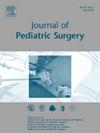简单与复杂胃裂的预后:30年多中心回顾。
IF 2.5
2区 医学
Q1 PEDIATRICS
引用次数: 0
摘要
背景:胃裂是一种先天性腹壁缺陷,在过去三十年中,全球新生儿的患病率有所增加。尽管新生儿护理取得了进步,但在了解单纯性(SG)和复杂性胃裂(CG)之间的长期结局和驱动因素方面仍然存在差距。先前的研究强调了这两组之间发病率和死亡率的差异,但缺乏长期一致的数据。本研究旨在通过评估30年期间的结果来解决这些差距,并假设SG和CG之间存在临床结果的差异。方法:回顾性分析Cerner真实世界数据(1998-2022)对胃裂新生儿的影响。SG和CG由已发表的研究中使用的手术程序和合并症和/或作者共识来定义。结果采用描述性统计进行分析。主要终点包括死亡率、住院时间(LOS)、呼吸机使用、坏死性小肠结肠炎(NEC)、肠道运动障碍和胃食管反流病(GERD)。结果:本研究共纳入331例新生儿,其中单纯性胃裂255例,复合性胃裂76例。白人占62%的SG和63%的CG (p=0.9)。CG与较高的早产率(33%对22%,p=0.002)、GERD(16%对11%,p=0.4)、NEC(11%对0.4%)相关。结论:这项大型回顾性研究显示了SG和CG之间结局的差异。胎儿提供者应咨询相应的最佳准备家庭谁是期待新生儿胃裂。证据水平:III。本文章由计算机程序翻译,如有差异,请以英文原文为准。
Simple vs. Complex Gastroschisis Outcomes: 30-Year Multicenter Review
Background
Gastroschisis is a congenital abdominal wall defect that has increased in prevalence at birth globally over the past three decades. Despite advancements in neonatal care, gaps remain in understanding the long-term outcomes and factors driving differences between simple (SG) and complex gastroschisis (CG). Previous studies have highlighted disparities in morbidity and mortality between these two groups but lack consistent data over extended periods. This study aims to address these gaps by evaluating outcomes over a 30-year period, hypothesizing that differences in clinical outcomes exist between SG and CG.
Methods
A retrospective review of Cerner Real World Data (1998–2022) was conducted for neonates with gastroschisis. SG and CG were defined by operative procedures and comorbidities used in published studies and/or by author consensus. Outcomes were analyzed using descriptive statistics. Primary endpoints included mortality, length of stay (LOS), ventilator use, necrotizing enterocolitis (NEC), intestinal dysmotility, and gastroesophageal reflux disease (GERD).
Results
The study cohort comprised 331 neonates, with 255 categorized as simple gastroschisis and 76 as complex gastroschisis. Whites comprised 62 % of SG and 63 % of CG (p = 0.9). CG was associated with higher rates of prematurity (33 % vs. 22 %, p = 0.002), GERD (16 % vs. 11 %, p = 0.4), NEC (11 % vs. 0.4 %, p < 0.0001), and dysmotility (11 % vs. 0 %, p < 0.0001). CG was also associated with decreased routine discharge (80 % vs. 85 %, p < 0.0001) and increased LOS (median 75 days [IQR: 29–130] vs. 33 days [IQR: 23–53], p < 0.001). There was no significant difference in survival to discharge between the two groups.
Conclusion
This large, retrospective review demonstrates differences in outcomes between SG and CG. Fetal providers should counsel accordingly to optimally prepare families who are expecting a newborn with gastroschisis.
Level of Evidence
III.
求助全文
通过发布文献求助,成功后即可免费获取论文全文。
去求助
来源期刊
CiteScore
1.10
自引率
12.50%
发文量
569
审稿时长
38 days
期刊介绍:
The journal presents original contributions as well as a complete international abstracts section and other special departments to provide the most current source of information and references in pediatric surgery. The journal is based on the need to improve the surgical care of infants and children, not only through advances in physiology, pathology and surgical techniques, but also by attention to the unique emotional and physical needs of the young patient.

 求助内容:
求助内容: 应助结果提醒方式:
应助结果提醒方式:


